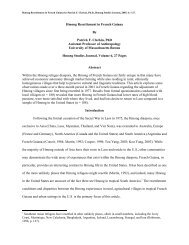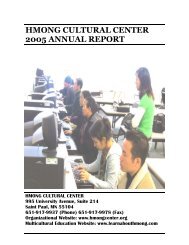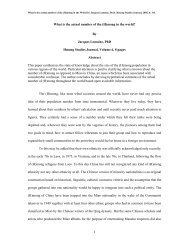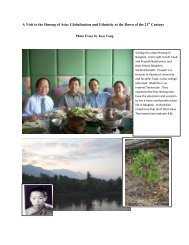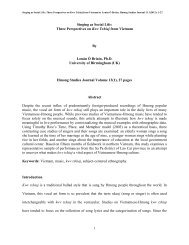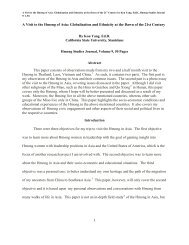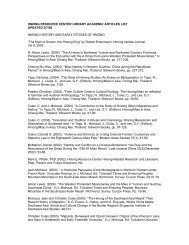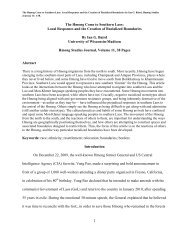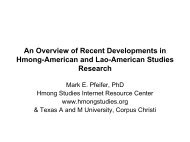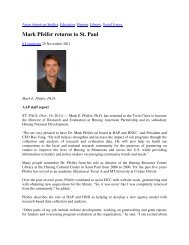Hmong and Lao Refugee Women - Hmong Studies Internet ...
Hmong and Lao Refugee Women - Hmong Studies Internet ...
Hmong and Lao Refugee Women - Hmong Studies Internet ...
Create successful ePaper yourself
Turn your PDF publications into a flip-book with our unique Google optimized e-Paper software.
<strong>Hmong</strong> <strong>and</strong> <strong>Lao</strong> <strong>Refugee</strong> <strong>Women</strong>: Reflections of a <strong>Hmong</strong>-American Woman Anthropologist by Dia Cha, Ph.D. <strong>Hmong</strong> <strong>Studies</strong> Journal,<br />
2005, 6: 1-35.<br />
women. In those sections of the camp reserved for <strong>Hmong</strong>, Mien, <strong>and</strong> Htin women, there were no such<br />
groups; nor were there any such groups at all in Chieng Kham.<br />
The aforementioned officers of UNHCR, as well as members of a variety of NGOs, constituted a<br />
constant presence in both camps. In Napho camp, there were twelve NGOs represented, while seven<br />
NGOs maintained members in Chieng Kham. These NGO members oversaw the provision of such<br />
services as sanitation, water supply, site maintenance, health education, opium detoxification <strong>and</strong><br />
rehabilitation, family planning <strong>and</strong> counseling, <strong>and</strong> skills training programs – the latter including<br />
education in carpentry, electrical appliance <strong>and</strong> radio repair, sewing, bicycle <strong>and</strong> motorcycle repair,<br />
welding, silk screening, mat <strong>and</strong> basket weaving, metalwork, clerical skills, typing, <strong>and</strong> agriculture. In<br />
Chieng Kham, there was also a center of traditional medicine (UNHCR Briefing Papers, 1992, <strong>and</strong><br />
CCSDPT, 1986).<br />
Shifts in the Nature of Gender Roles<br />
Most of the NGO officers were foreigners who answered to foreign directors, the latter being<br />
overwhelmingly either Americans or Europeans. Lower echelon NGO staff, meanwhile, were Thai<br />
nationals exclusively, <strong>and</strong> each NGO employed a number of refugees to assist with various camp<br />
functions. Nevertheless, very few refugee women occupied these positions. In fact, very few refugee<br />
women even sought to avail themselves of the services provided. Although NGO personnel attempted to<br />
encourage female participation in available programs, such efforts met with little enthusiasm among the<br />
target female population. To a large extent, this was due to the fact that, as a matter of policy, these same<br />
NGO personnel actively supported the idea of "preservation of traditional culture." That is, they<br />
supported those traditions by which, for countless generations, women had been restricted from<br />
participation in their societies' institutions in any but the most circumscribed of roles. Moreover,<br />
inasmuch as the administrators <strong>and</strong> various other functionaries with whom these women interacted were<br />
almost exclusively men, who could be depended upon to strive at every turn to preserve the power <strong>and</strong><br />
authority which had ever been their perquisites in a traditional, male dominated culture, any policy on the<br />
part of NGO representatives which fostered the conservation of the status quo served, even if indirectly,<br />
8




